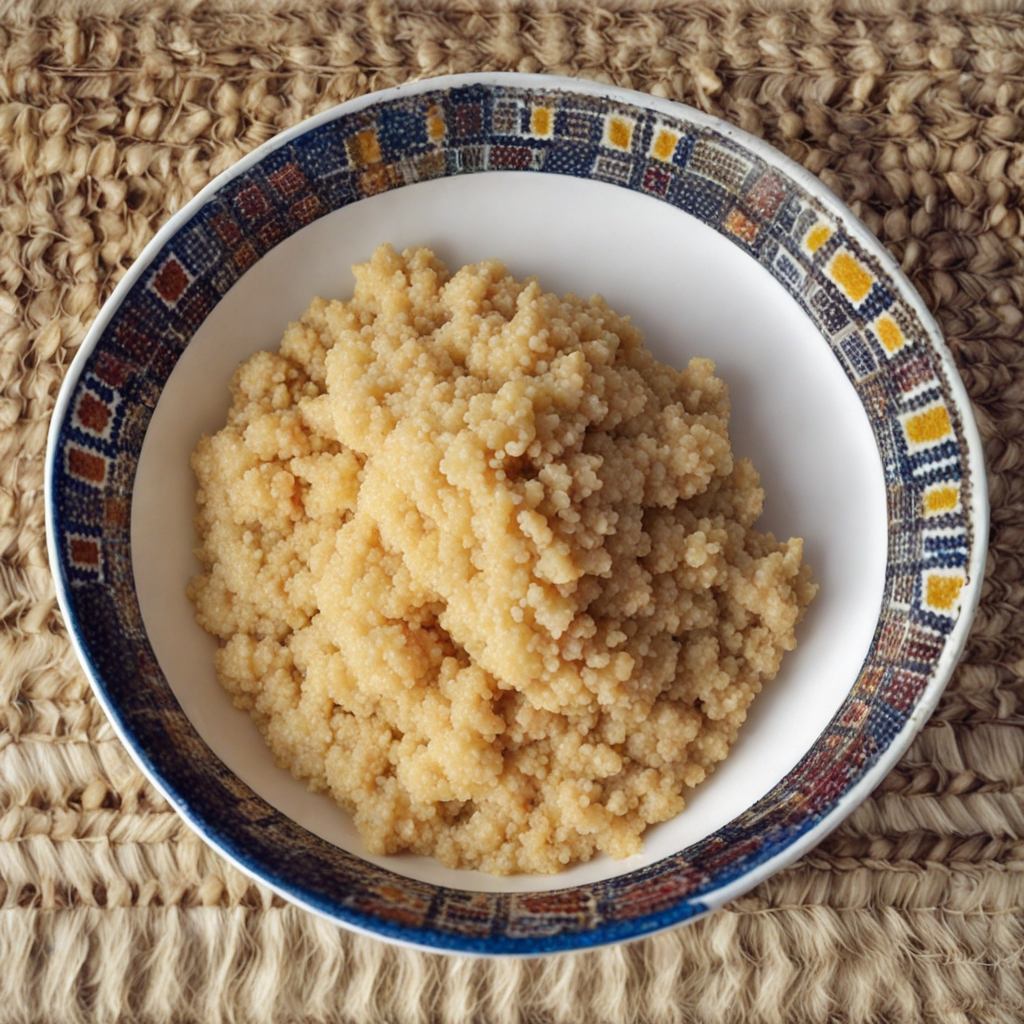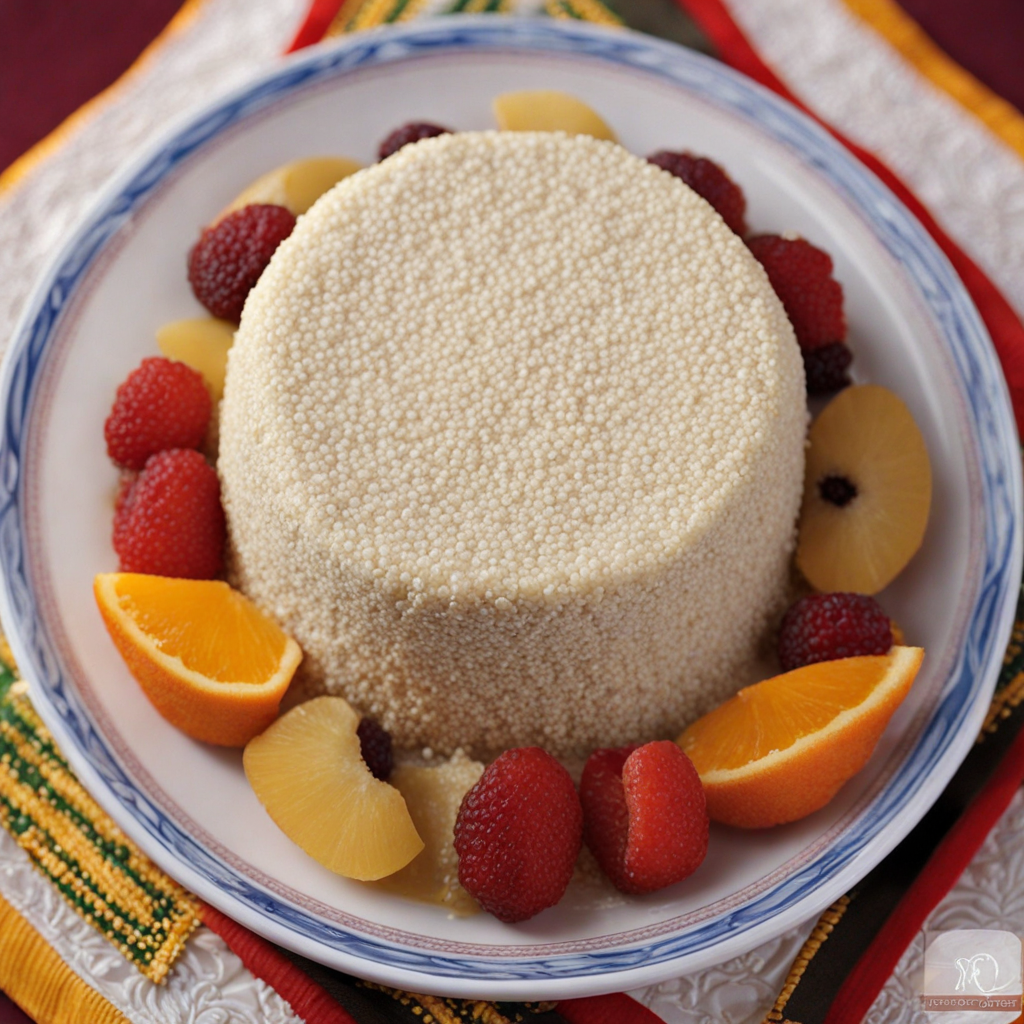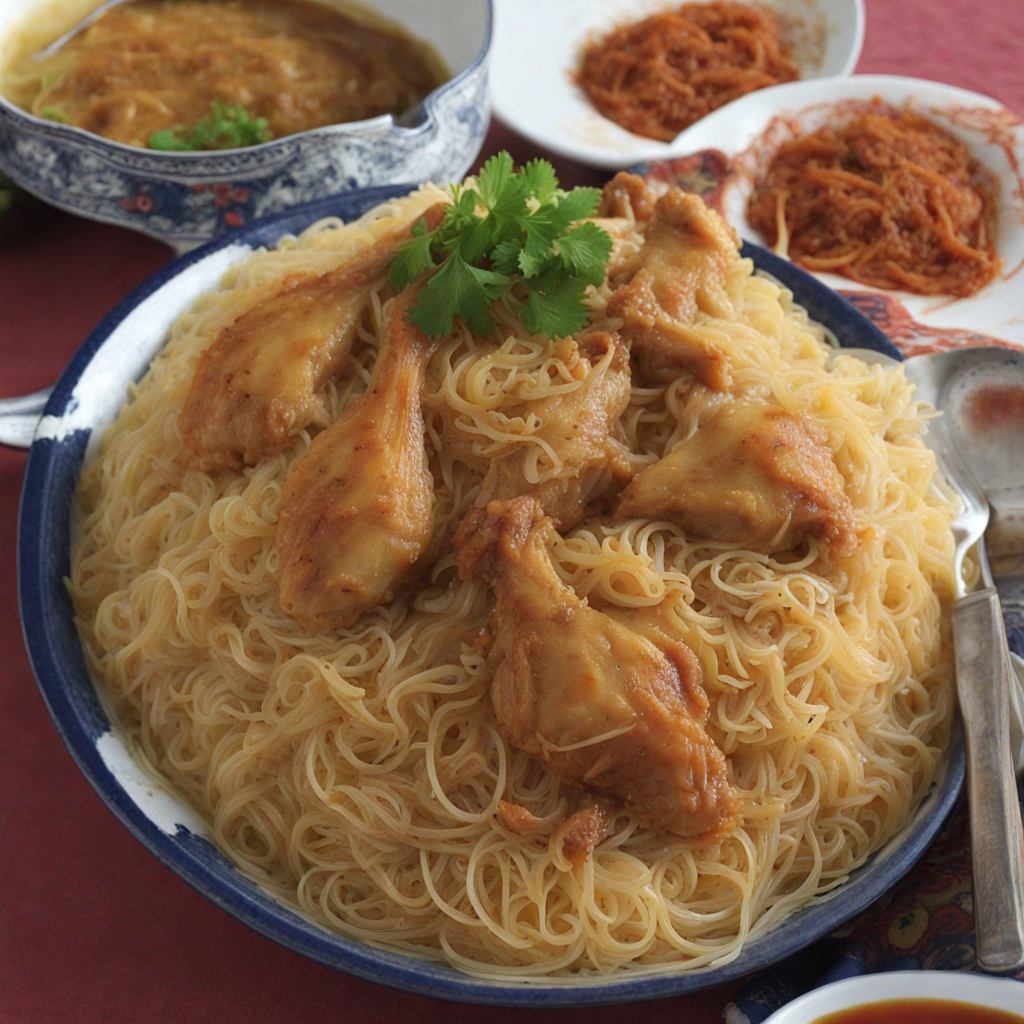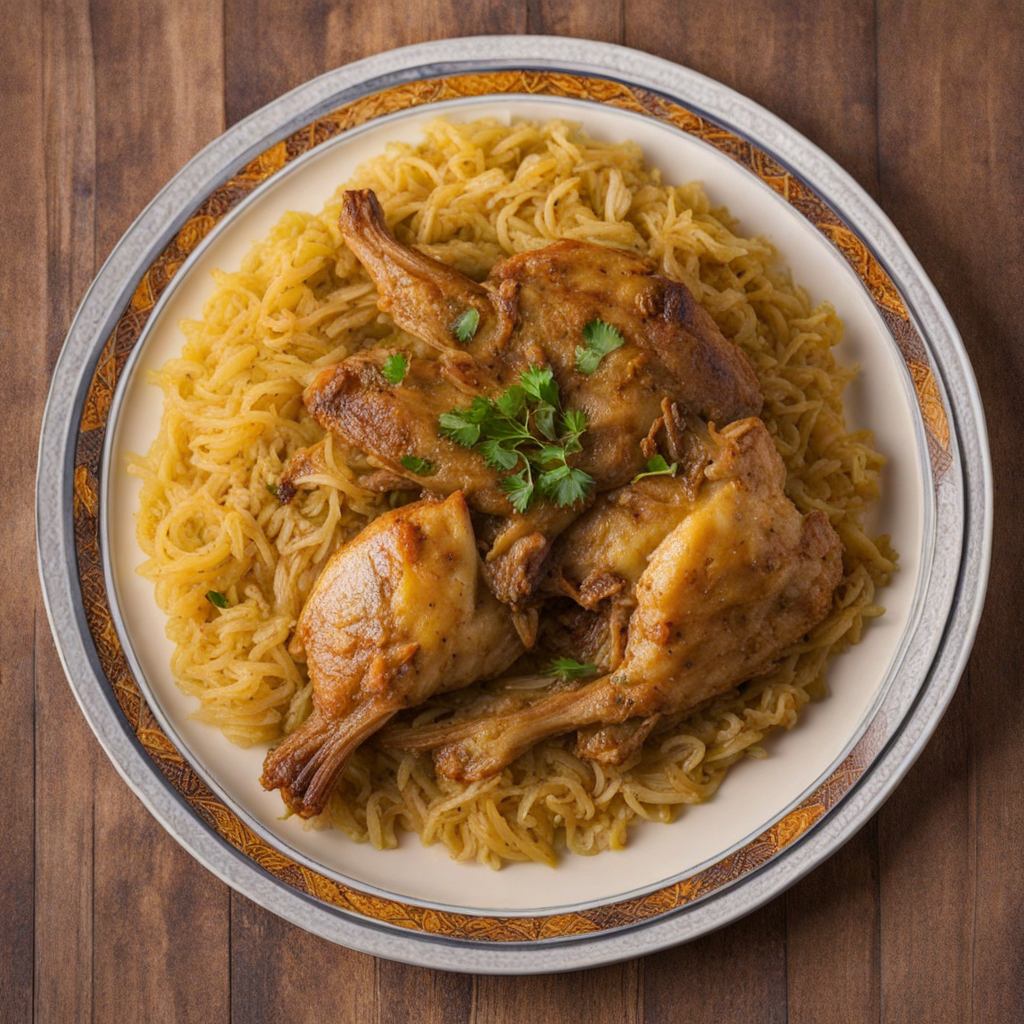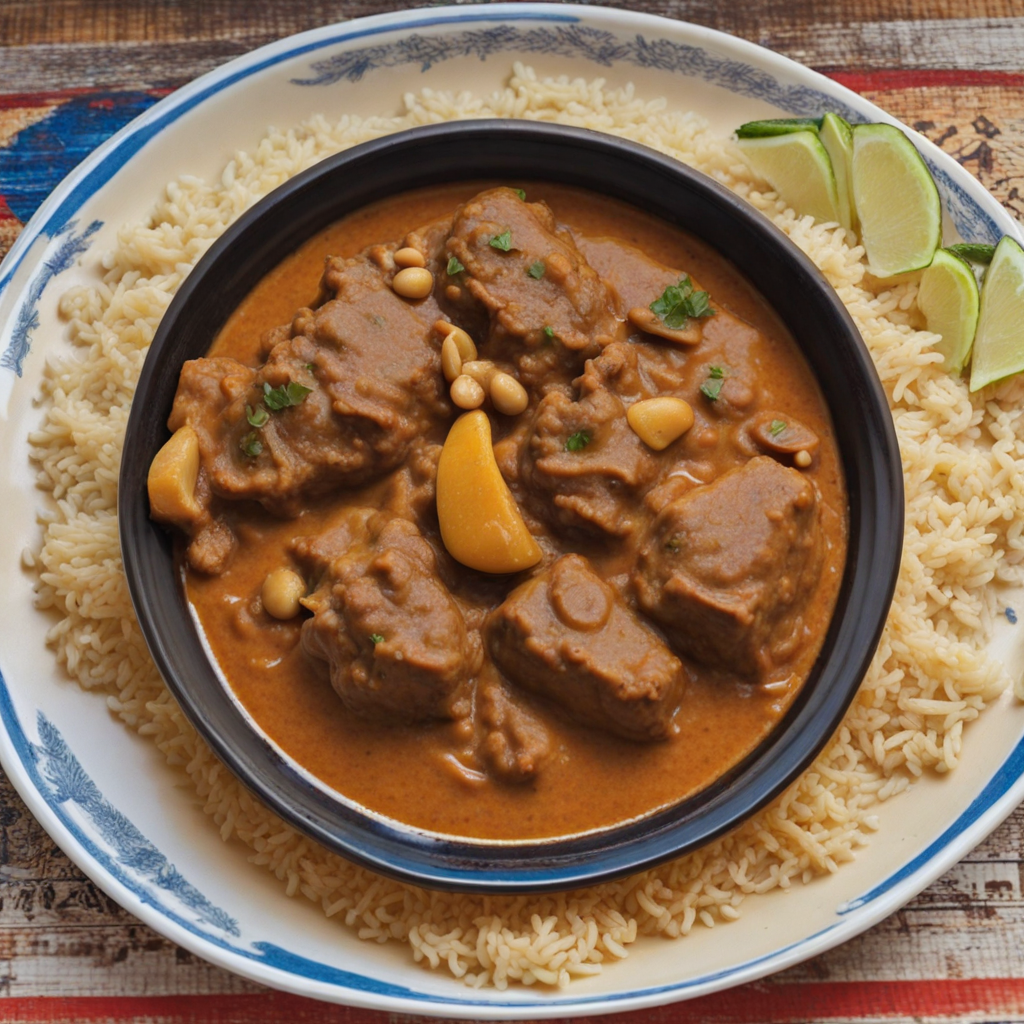Lakh
Lakh is a traditional Senegalese dish that captivates the palate with its unique blend of flavors and textures. At its core, Lakh is a savory rice dish often prepared with a base of millet or couscous, which is steamed to perfection, creating a fluffy and light texture. The dish is typically enriched with a variety of ingredients, including vegetables, spices, and sometimes meat or fish, making it a versatile option for anyone looking to explore the rich culinary heritage of Senegal. The use of local spices like yébe and the iconic African pepper adds a distinctive kick, while ingredients such as onions, tomatoes, and bell peppers contribute to a vibrant medley of flavors that dance on the tongue. What makes Lakh particularly special is its communal aspect; it is often served in a large platter, inviting friends and family to gather around and share in the experience. The dish is commonly accompanied by a spicy sauce or a side of marinated vegetables, which enhances its flavor profile and adds layers of complexity. Each bite is a delightful harmony of the subtle earthiness of millet or couscous, the freshness of the vegetables, and the warmth of the spices, making it a truly satisfying meal that nourishes both the body and soul. As you savor Lakh, you are not just tasting a dish; you are experiencing a slice of Senegalese culture. Traditionally enjoyed during special occasions or family gatherings, Lakh embodies the spirit of hospitality and togetherness that is central to Senegalese life. The dish is not only a feast for the senses but also a celebration of the vibrant agricultural landscape of Senegal, where each ingredient reflects the region’s rich biodiversity and culinary traditions. Discovering Lakh is an invitation to partake in the warmth and vibrancy of Senegalese cuisine, leaving you with memories and flavors that linger long after the meal is over.
How It Became This Dish
The History of Lakh: A Culinary Jewel of Senegal #### Origins of Lakh Lakh, a cherished dish in Senegalese cuisine, is a testament to the rich culinary heritage of West Africa. This dish, often referred to as a type of porridge or a sort of couscous, is made primarily from millet, a grain that has been cultivated in this region for thousands of years. Millet, known for its resilience in arid climates, has been a staple food for various communities across the Sahel, including Senegal. The origin of Lakh can be traced back to ancient agricultural practices in the region. As early as 3000 BCE, millet was domesticated in West Africa, becoming an integral part of the local diet. It was particularly favored by the Wolof, one of the major ethnic groups in Senegal, who developed unique culinary techniques and recipes to highlight its versatility. Lakh, in its various forms, emerged as a significant dish not only for daily sustenance but also for ceremonial occasions. #### Cultural Significance In Senegal, food is an essential aspect of cultural identity, and Lakh embodies this connection. Traditionally, Lakh is served in communal settings, emphasizing the values of sharing and togetherness that are central to Senegalese culture. It is often enjoyed during family gatherings, celebrations, and religious festivals, reflecting the importance of community in Senegalese life. The preparation of Lakh involves meticulous steps that are often passed down through generations. Families may gather to prepare the dish, with each member contributing to the process, from the grinding of millet to the cooking of the final product. This communal aspect of cooking reinforces social bonds and underscores the importance of family ties. Lakh is typically served with a sauce made from vegetables, fish, or meat, enhancing its nutritional value and flavor. The combination of Lakh and a rich sauce is not just a meal; it is a cultural experience, often accompanied by traditional music and dance, creating a vibrant atmosphere that celebrates Senegalese heritage. #### Development Over Time The evolution of Lakh reflects broader changes in Senegalese society, particularly during the colonial period and the subsequent independence movement. Under French colonial rule, the introduction of new ingredients and cooking methods began to influence traditional dishes, including Lakh. While millet remained the primary grain, new sauces incorporating tomatoes, onions, and spices became popular, adding complexity to the dish. In the post-colonial era, as Senegal sought to redefine its national identity, traditional foods like Lakh took on renewed significance. The government promoted local cuisine as a means of cultural pride, encouraging the use of indigenous ingredients and methods. This movement led to a renaissance of traditional dishes, and Lakh emerged as a symbol of national identity and culinary heritage. In contemporary Senegal, Lakh continues to evolve. While it retains its traditional roots, modern chefs and home cooks alike have begun experimenting with new flavors and presentation styles. The rise of global food trends has introduced variations of Lakh that incorporate international ingredients, catering to a more diverse palate while still honoring the dish’s origins. #### Lakh in Modern Senegal Today, Lakh is not just a household staple; it is also featured in restaurants and food markets across Senegal, celebrated for its nutritional benefits and cultural significance. As health consciousness rises globally, millet’s status as a gluten-free, high-fiber grain has garnered attention, making Lakh a popular choice for those seeking nutritious alternatives. Moreover, Lakh has transcended its local roots, gaining recognition in the global culinary scene. Senegalese chefs and food enthusiasts have begun sharing traditional recipes online, showcasing Lakh and its accompaniments to an international audience. This exposure not only promotes Senegalese cuisine but also fosters a greater appreciation for African food traditions. In the diaspora, Senegalese communities continue to prepare Lakh as a way of preserving cultural ties and passing down traditions to younger generations. Cooking and sharing Lakh serves as a reminder of home, creating a sense of belonging and continuity in a foreign land. #### Conclusion Lakh is more than just a dish; it is a cultural emblem that encapsulates the history, values, and resilience of the Senegalese people. From its origins as a staple grain to its role in communal meals, Lakh has evolved while retaining its significance as a symbol of identity and heritage. As Senegal continues to navigate the complexities of modernity and globalization, Lakh stands as a reminder of the importance of culinary traditions in shaping cultural identity. Its journey through time reflects not only the history of Senegal but also the enduring power of food to connect people, celebrate heritage, and foster community. In every bite of Lakh, one can taste the rich tapestry of Senegalese history and culture, making it a dish that nourishes both body and soul.
You may like
Discover local flavors from Senegal


